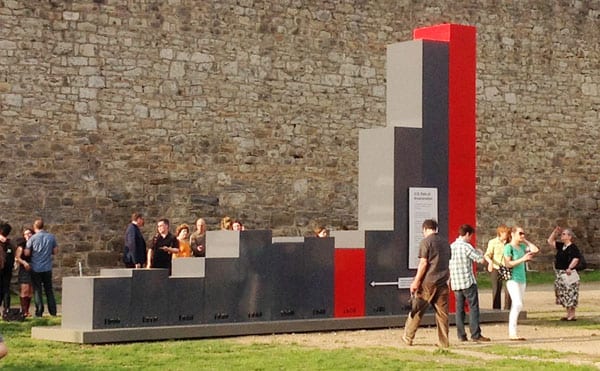
March 12, 2019; New York Times
Sometimes creating a wildly attractive “model” for social practice is the very worst thing you could do to succeeding generations. As systems thinkers remind us, “foresight is morality.”
In Philadelphia, the Eastern State Penitentiary, which opened in 1829, became “a model of solitary confinement imitated around the world,” notes Shannon Eblen in the New York Times. The prison, with its Panopticon-type surveillance, once attracted “more visitors than Independence Hall” during the 19th century. The prison closed in 1971, but in 1994 the prison grounds and buildings became a museum preserved, as Eblen puts it, “in a permanent state of decay.” Although crowds no longer outpace Independence Hall, the museum does attract an estimated 250,000 visitors a year. But, as Eblen explains, a couple of years ago, the museum staff and board decided to take a risk.
Sean Kelley, who became Eastern State’s first full-time museum employee in 1995, is now senior vice president and director of interpretation. For two decades, Kelley notes, the museum presented the 142-year history of the institution as a prison. (One of the most popular exhibits is a cellblock that’s set up as it was when Al Capone was in prison at Eastern State for a few months in 1929.) But a few years ago, Kelley and other museum leaders began to believe its mission wasn’t adequately broad or ambitious.
Two years ago, Kelley explains, the museum rewrote its mission statement. In particular, it was decided that the museum would change its interpretative guidelines to explicitly recognize mass incarceration as a national crisis. The museum’s mission statement, adopted by the board in June 2017, now reads, “Eastern State Penitentiary Historic Site interprets the legacy of American criminal justice reform, from the nation’s founding through to the present day, within the long-abandoned cellblocks of the nation’s most historic prison.” The museum’s vision is to “move visitors to engage in dialogue and deepen the national conversation about criminal justice.”
Kelley credits a trip to Chicago, where he saw a screening of “Freedom/Time,” an animation less than seven minutes long that artist Damon Locks codirected in 2014 with inmates at Stateville Correctional Center in Illinois, for helping galvanize the change. The animated short uses drawings on tracing paper, shown frame by frame, to tell eight-second stories.
Sign up for our free newsletters
Subscribe to NPQ's newsletters to have our top stories delivered directly to your inbox.
By signing up, you agree to our privacy policy and terms of use, and to receive messages from NPQ and our partners.
“I came back here, and I couldn’t stop thinking about it. I couldn’t stop thinking about that quote that prison walls don’t just keep the prisoners in, they keep the public out,” Kelley tells Eblen.
Marney Penn, a museum tour guide, notes, “Sometimes you do need to shock people to attention. If you’re coming here for a historic tour, that’s great. But at the end of your tour, it’s like, surprise, we have all this really serious information for you.” In particular, a 16-foot “Big Graph” sculpture in the prison yard at the end of the tour illustrates the number of people incarcerated in the US over the decades displayed on one side, with the racial breakdown shown on the other.
Paula Marincola, executive director of the Pew Center for Arts and Heritage, lauds the museum for its work: “They do very thoughtful and imaginative work in interpreting their site for their public and connecting the site and its history to contemporary issues,” she tells Eblen.
The museum’s transformation goes beyond changing exhibits and programming to influencing its hiring practices as well. “Three years ago,” Eblen writes, “the museum began hiring former inmates—referred to as ‘returning citizens’—to work as guides.” Not only did this provide returning citizens with needed jobs, but the museum’s policy change helped to break down the distance that the tourist gaze at the prison experience can otherwise often serve to reinforce.
Penn, notes Eblen, is one of these returning citizen tour guides. Penn’s experiences in prison, notes Eblen, “help her explain things in a way other guides can’t, including how she bought necessities, like deodorant, while earning only 19 cents an hour.”
Penn explains, “We hold onto things, we are opinionated, and there is stigma attached with criminals and people who come out of the criminal justice system. I love my job because we break down those barriers.”—Steve Dubb












